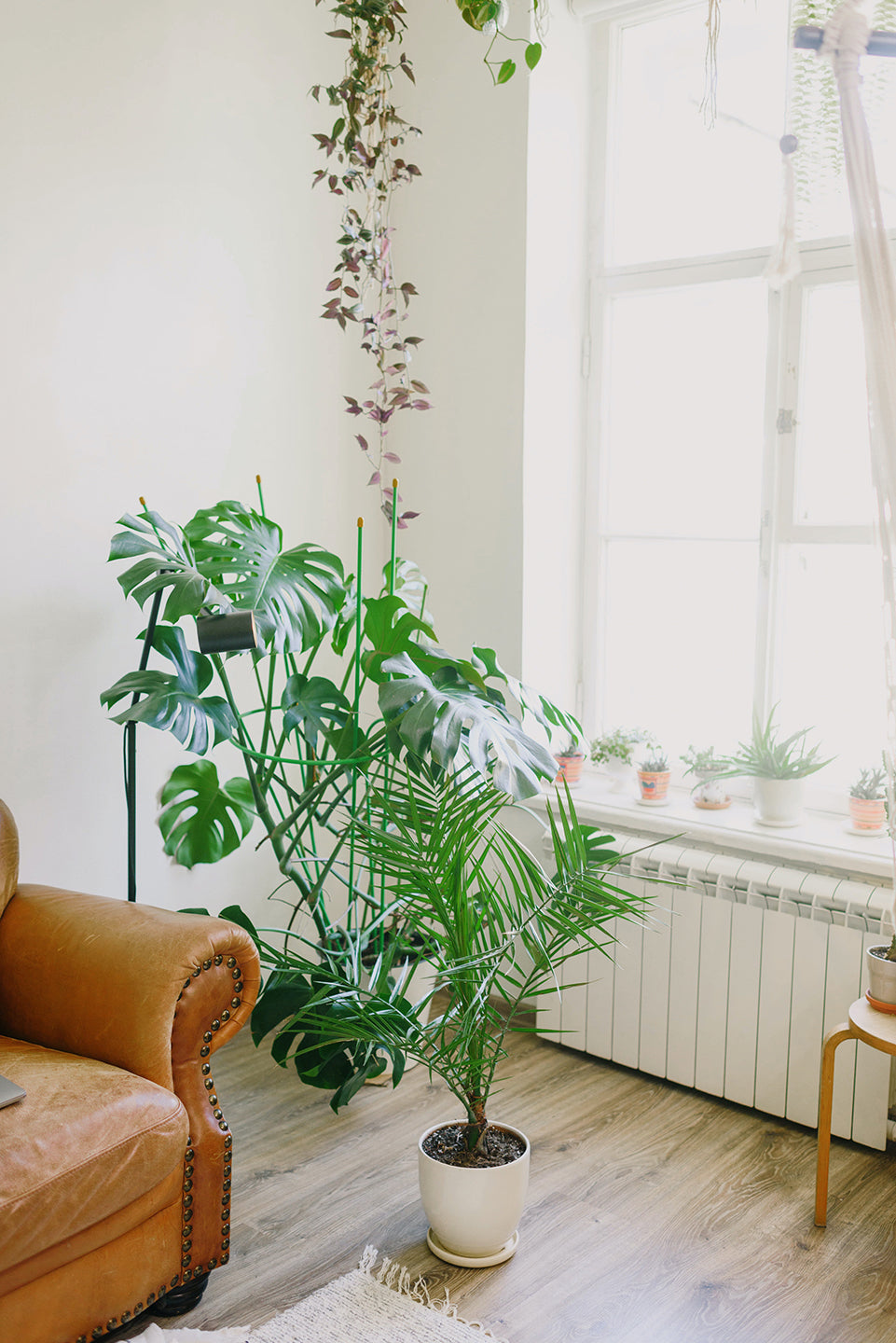Light is one of the most important factors in plant care, and choosing the right plant and where to place them based on lighting can be intimidating! We have put together a comprehensive guide on what these light specifications mean—how to find this lighting in your space so your houseplants can thrive.
The best rule of thumb:
1. Choose a spot
2. Determine your lighting
3. Then choose your plant

Why do plants need light?
Light is what enables plants to photosynthesize, a chemical process which takes in light, water, and carbon dioxide to create sugar which fuels their growth. Every plant needs some form of light to survive, and if you are having problems with your houseplant, checking the light is a great place to start. The right levels of light a plant needs to survive is different for each plant.
While there are many plants that are tolerant of and can grow in low light environments, there is no such thing as a plant that loves low light. Even the low light tolerant plants will thrive in brighter areas. With this in mind, it just comes down to figuring out which plants work in your space.

How to determine lighting?
What direction is my window facing?
If you know the direction your window is facing, you will have a start on choosing a plant that works for your space. Here is a quick guide on the type of light to expect with each direction of your window:
North-Facing Window: No direct sunlight. Medium indirect, best for low or medium light plants.
East-Facing Window: Bright direct sunlight in the morning, bright indirect light for most of the day. This is best for most plants!
South-Facing Window: Bright, direct and often intense sunlight.
West-Facing Window: Low light in the morning, bright intense direct sunlight into the afternoon.

What kind of light does my plant need?
Indoor houseplant guides have separated light into four categories:
- Low Light
- Medium Light
- Bright, Indirect Light
- Direct Sunlight
Low Light: Low amounts of natural light, no sunlight. This is the minimum amount of light a plant needs to grow or thrive.
Shop our low light plants here.
-Medium Light: No light is coming from a direct source (a direct source being the sun or an artificial grow light). Other plants or buildings could be blocking light from directly hitting the plant.
-Bright Indirect Light: Filtered light, best described by plant guru Hilton Carter as “the light you see on an overcast day”. The majority of plants will thrive in bright indirect light. Grow lights provide bright indirect light so these are a great alternative as an artificial light source.
-Direct Sunlight: While self-explanatory, the intensity of the sunlight varies depending on the time of the day. Direct sunlight for plant care is when the rays are directly shining on the plant. For many plants, this can burn the leaves, but some plants love the intense sunlight.
Cacti and succulents love bright direct sunlight.

Every plant needs light to survive. If you can’t provide the light you need for your plant, artificial light is a great alternative with grow lights. Pay attention to your plants, they will tell you if they are getting the light they need.


